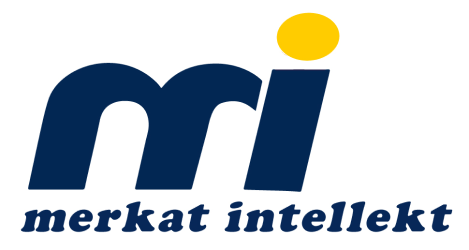The best way to learn something new is by example. If we can see what works and doesn’t work in real-life situations, we have a better chance of learning from those examples than trying to figure things out for ourselves. This article will give four examples of how founders came up with their minimum viable products that hit the mark.
Product Hunt’s MVP
When Product Hunt’s founder Ryan Hoover wanted to build a platform where users can share their favorite digital products and discuss them with others – something like Dribbble for the product people, he was not sure if it was something others wanted, so he didn’t set out to build out the entire platform, which could take many weeks, if not months, of effort. This was a perfect candidate for the MVP approach.
Using a link sharing tool called LinkedIn, he created a group of his startup friends. Any member of this group could submit a software product that they liked. At the end of the day, a digest email was sent to all the members.
All it took Ryan to set up his MVP was a massive… well, no, twenty minutes.
Within weeks, Product Hunt attracted over 170 people who wanted to share and discover excellent digital products.
Today, Product Hunt ranks among the top 15,000 websites in the world. In the Communications, Electronics and Technology, it hovers around the 300th position. It’s no mean feat.
Key lesson: The critical thing is that you don’t need to spend too much time building one. You just need enough to get your idea off the ground – even if it means hacking together available solutions. Once you’ve gained traction, you can start adding features on top of the core functionality.
Airbnb’s One-page MVP
Airbnb is a perfect example of how solving a personal problem could become a business opportunity. Brian Chesky and Joe Gebbia, former schoolmates and then roommates, found it hard to pay their apartment rent in San Francisco.
Foreseeing that hotel rooms would be overbooked for the impending IDSA Conference, they decide to rent out their airbed in their apartment. They set up a simple website with a few pictures of their place and displayed the contact info and address.
To their surprise, they got three paying customers who paid $240. They repeated the same experiment during the 2008 Democratic National Convention and 2008 SXSW.
After plenty of such experiments, and fresh approaches to getting the word out to prospects, Airbnb has disrupted the entire hotel industry. The online phenomenon has over 7 million listings by 2.9 million hosts worldwide in 2021, 14,000 new hosts join the platform each month, and the company was worth $38 billion.
Key lesson: Sometimes a tiny crack in the wall is enough to make a big entrance. Tease your capabilities and offer something small in return, and you’ll find yourself in a position to provide more value over time.
Zappos’s ‘Wizard of Oz’ MVP
Nick Swinmurn wanted to check if people would buy without trying them on – a revolutionary, even crazy, proposition at that time. He set up a website to sell shoes, but he had zero inventory. What he would do is go to the store, take pictures of shoes and upload them to his website. When someone ordered a pair, he would run back to the store, purchase it and ship it.
Zappos was a perfect example of the Wizard of Oz way of building an MVP: Make everything look normal on the outside, but everything inside is manually operated by humans. And bring in technology only when the prior steps are validated.
Zappos is known for doing some crazily innovative things: 365 day returns, offering new hires one month’s salary to leave the job, and instituting a company culture interview in addition to the business interview.
Sounds like Zappos found a great way to build a solid business. Eventually, Zappos was acquired by Amazon for $1.2 billion and is now worth more than a few billion dollars today.
Key lesson: The Wizard of Oz MVP is perfect when you’re looking to validate a concept or product before investing any money into it. It also works well when you want to test whether there will be demand for what you have built. If you think you might not succeed, this approach gives you a chance to fail fast and move on to another project.
Uber’s Software Prototype MVP
After their recent exits from their previous companies, Travis Kalanick and Garrett Camp, wanted to do something about the high prices and absence of affordable alternatives to city cabs. They set out to invent a business model whereby San Francisco locals hire a black cab from their iPhones, and pay for it without cash.
The first version of Ubercab was a PHP application that was mobile responsive – bear in mind that it was not a mobile app! There was no way to download it on the App store. To get access to the service, one had to mail the founders. In the early versions, you couldn’t pay from within the app. All the orders were manually managed by the company themselves.
The cabs were all their own.
Once they broke the limits of this model, they hired third-party cabs and eventually taught the drivers to manage the orders.
Now Uber and the model they invented are an international phenomenon with hundreds of millions of users worldwide.
Key lesson: This story shows how “less is more” can be the formula to launch a successful startup. You need to start somewhere, and sometimes just starting means launching a prototype with very limited set of features. Don’t worry too much about perfection; focus instead on getting something working. Once you’ve got something going, then you can iterate and improve upon it –just like Uber.
These are only some of the successful examples of how innovatively these founders came up with their own version of Minimum Viable Products. There are hundreds more. These four should serve us well as inspiration, when starting our own projects.
If you are interested to know more about the concept of Minimum Viable Product, check out our other articles on this blog.
On the other hand, if you need help coming up with your own flavor of MVP or picking the suitable one, please reach out to us at support@merkatintellekt.com.

